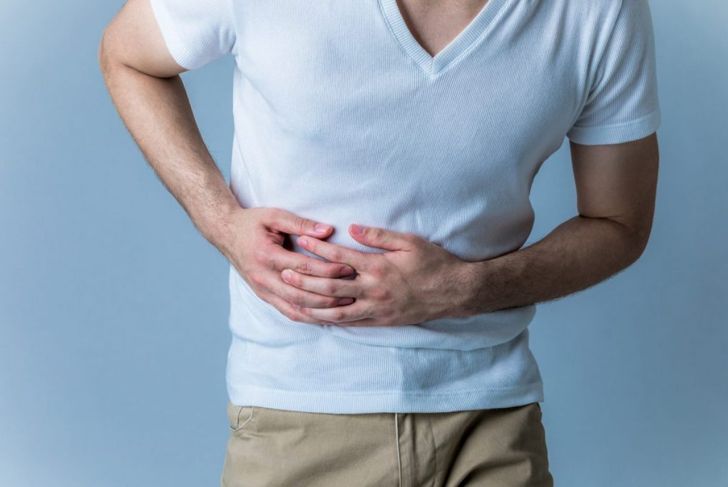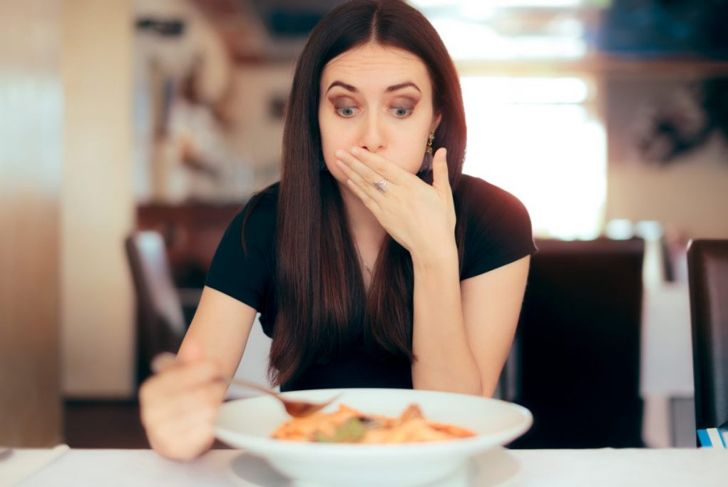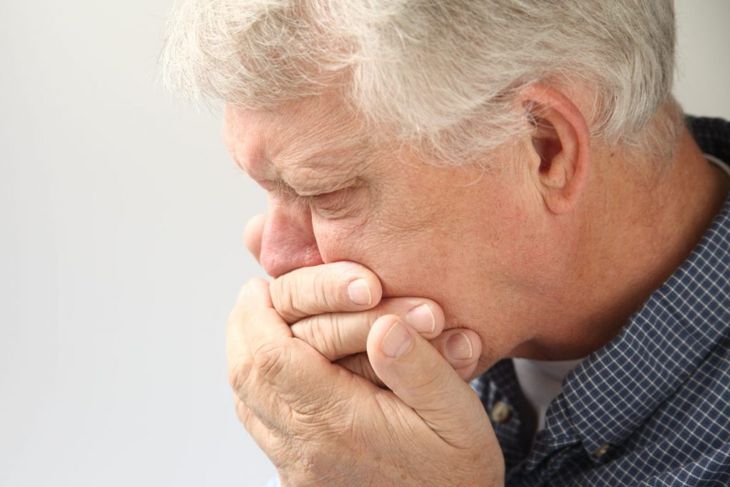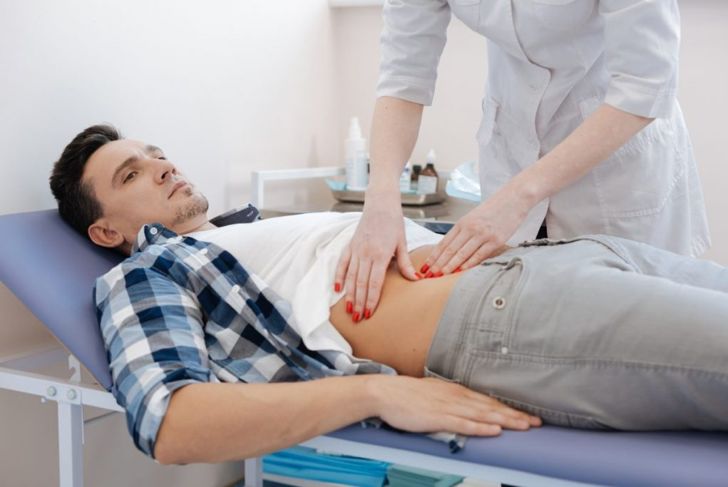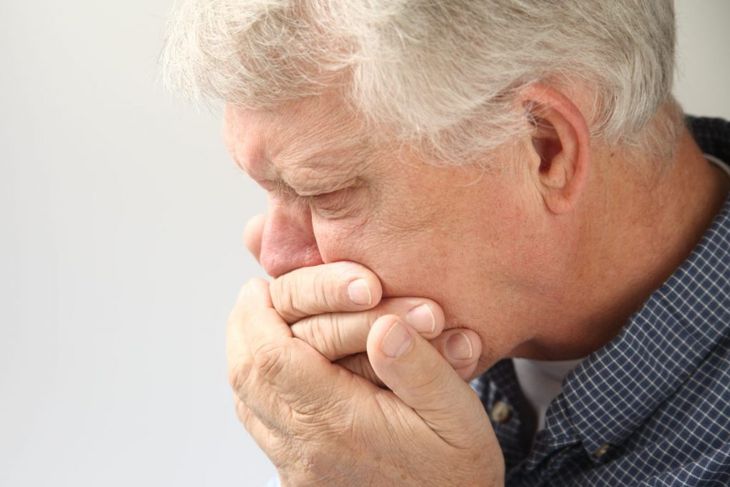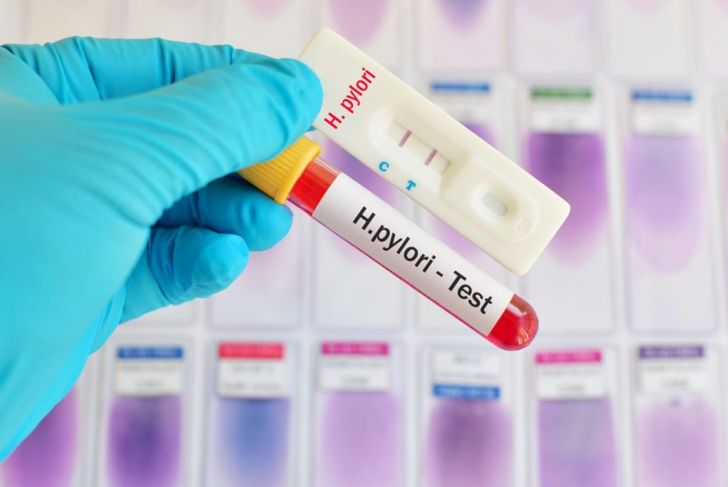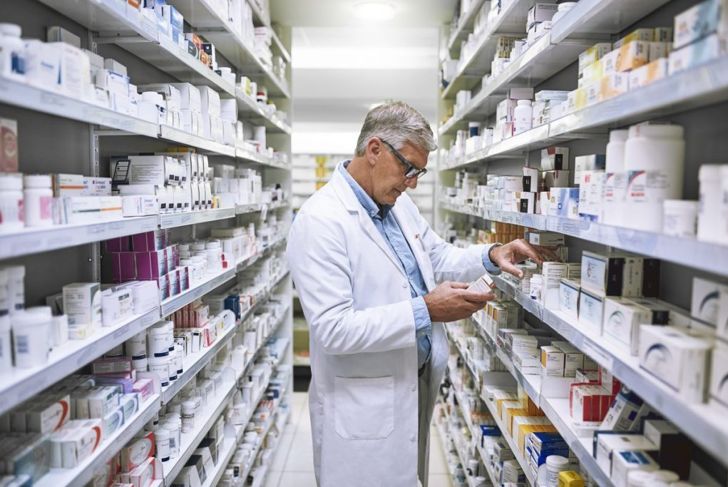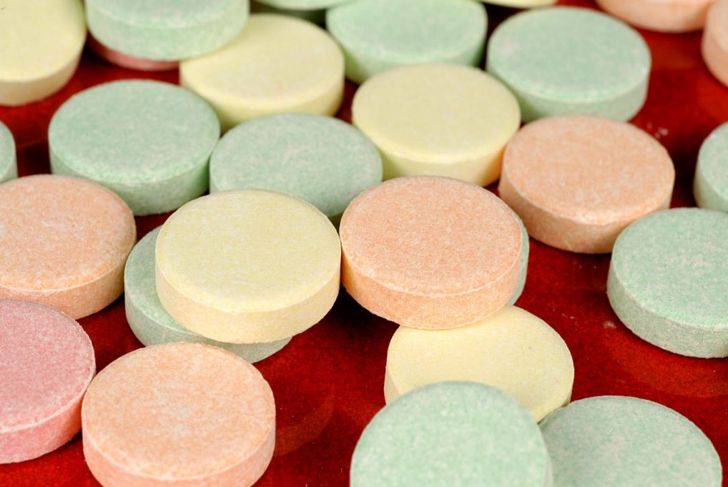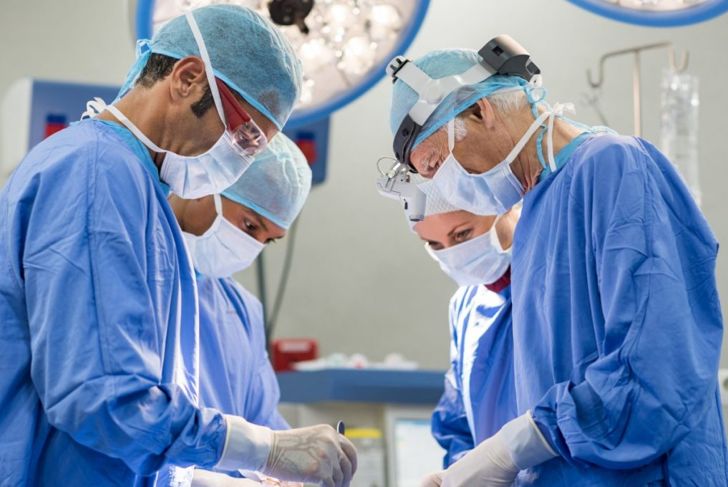Peptic ulcers develop in either the stomach, called gastric ulcers, or in the duodenum, called duodenal ulcers. The duodenum is the part of the small intestine connected to the bottom of the stomach. A layer of mucus covers both the stomach and the duodenum, protecting the tissues underneath from the gastric acids used to digest food. An ulcer occurs when the mucous lining is damaged, and a reddish indentation or crater forms. The crater reaches the underlying tissue. The cause is almost always a bacterium called H. pylori though, in rare instances, medications can lead to the condition.
Symptom: Pain
Pain, often described as a burning or gnawing pain or feelings similar to hunger, is the most common symptom of a duodenal ulcer. It occurs between the breastbone and navel, and sometimes in the back. Often, the pain arises around mealtime and when the individual is hungry, and it may wake a person up at night. It can last from a few minutes to hours. Drinking orange juice or coffee can bring on the pain. Usually, a person will wake up unencumbered, but begin feeling this pain mid-morning and two to three hours after each meal. Discomfort is reduced by food or by taking an antacid. Many patients feel no pain, especially the elderly.
Symptom: Digestive Problems
The ulcer creates other problems. The individual may feel very full after a small meal. He or she may feel bloated or nauseated and may vomit or retch. Loss of appetite and unexplained weight loss may also occur, as could heartburn. Many people with a duodenal ulcer find it difficult to tolerate fatty foods.
Serious Symptom: Bleeding
A bleeding ulcer is a serious problem. There may be blood in the stool, which may be red or resemble black tar. Vomit may contain blood and resemble coffee grounds. If the vomiting doesn’t stop or gets worse, this indicates a dangerous condition. All of the above are medical emergencies and need immediate attention. If bleeding is not serious, a physician may be able to stop it.
Serious Symptom: Perforation
Perforation of the ulcer occurs when the acid burns a hole right through the ulcer, the tissue, and into the abdominal cavity. This is a painful and dangerous occurrence. Food, bacteria, and acid can be expelled from the duodenum and cause damage and infection, leading to the inflammation of the peritoneum, the membrane that lines the abdominal cavity.
Other Serious Symptoms
Shortness of breath and difficulty breathing are serious symptoms, as are feeling faint and passing out. Fatigue is a sign of trouble if other symptoms are present. If any of these symptoms are accompanied by abdominal pain, seek medical help right away.
Treatment: Antibiotics
Contrary to popular belief, duodenal ulcers are not caused by stress or spicy foods. H. pylori bacteria cause 19 out of 20 cases of duodenal ulcers. This is fortunate because an antibiotic or a combination of them can halt the infection easily. To eliminate the bacteria completely, the medication regimen may last up to two weeks.
Treatment: Protein Pump Inhibitors – PPIs
Protein pump inhibitors protect the duodenum by reducing the amount of acid produced by the cells that line the stomach. They are also used to treat acid reflux. PPIs help prevent ulcers caused by anti-inflammatory medications, but continuous use increases the risk of fractures of the hip, wrist, and spine.
Treatment: Histamine Blockers and Antacids
Histamine blockers stop the production of histamine, which plays a role in acid production. Antacids can be bought off the shelf or with a prescription; they relieve pain by neutralizing the stomach acids but are not a suitable primary treatment. Antacids with calcium carbonate are effective.
Treatment: Surgery
It is rare for a person to require surgery for duodenal ulcers; it is a last resort when drug treatment and endoscopic procedures have not worked. If there is a perforation, emergency surgery will repair the opening. Surgery may also address uncontrolled or repeated bleeding. In recent years, surgery has become less and less common as drug therapies continue to progress.
Treatment: Lifestyle Changes and Home Treatments
Controlling stress can help treat the pain of duodenal ulcers. Exercise, writing in a journal and spending downtime with family or friends can all relieve stress. Smoking increases gastric acid and should be abstained from to reduce ulcers, as should alcohol, which irritates the lining of the duodenum and can cause inflammation and bleeding. Eat a healthy diet including probiotics, yogurt, miso, sauerkraut, and aged cheeses, and get enough sleep to ensure the strongest possible immune system and further relieve stress. Avoid coffee, soda, chocolate, chilis and hot peppers, high-salt and deep-fried foods, processed foods, and acidic foods like tomatoes and citrus fruits until the problem is resolved.

 Home
Home Health
Health Diet & Nutrition
Diet & Nutrition Living Well
Living Well More
More